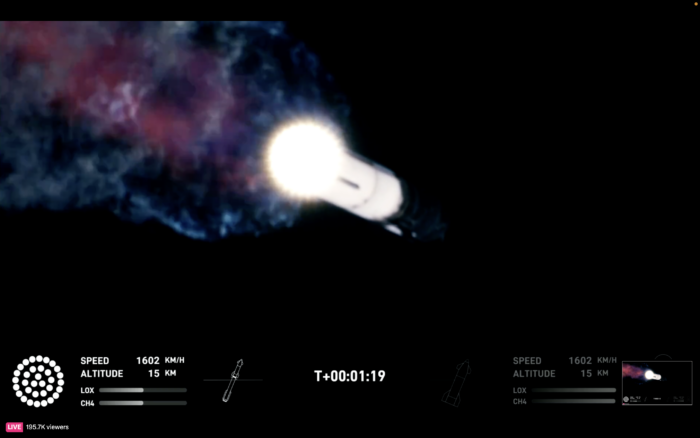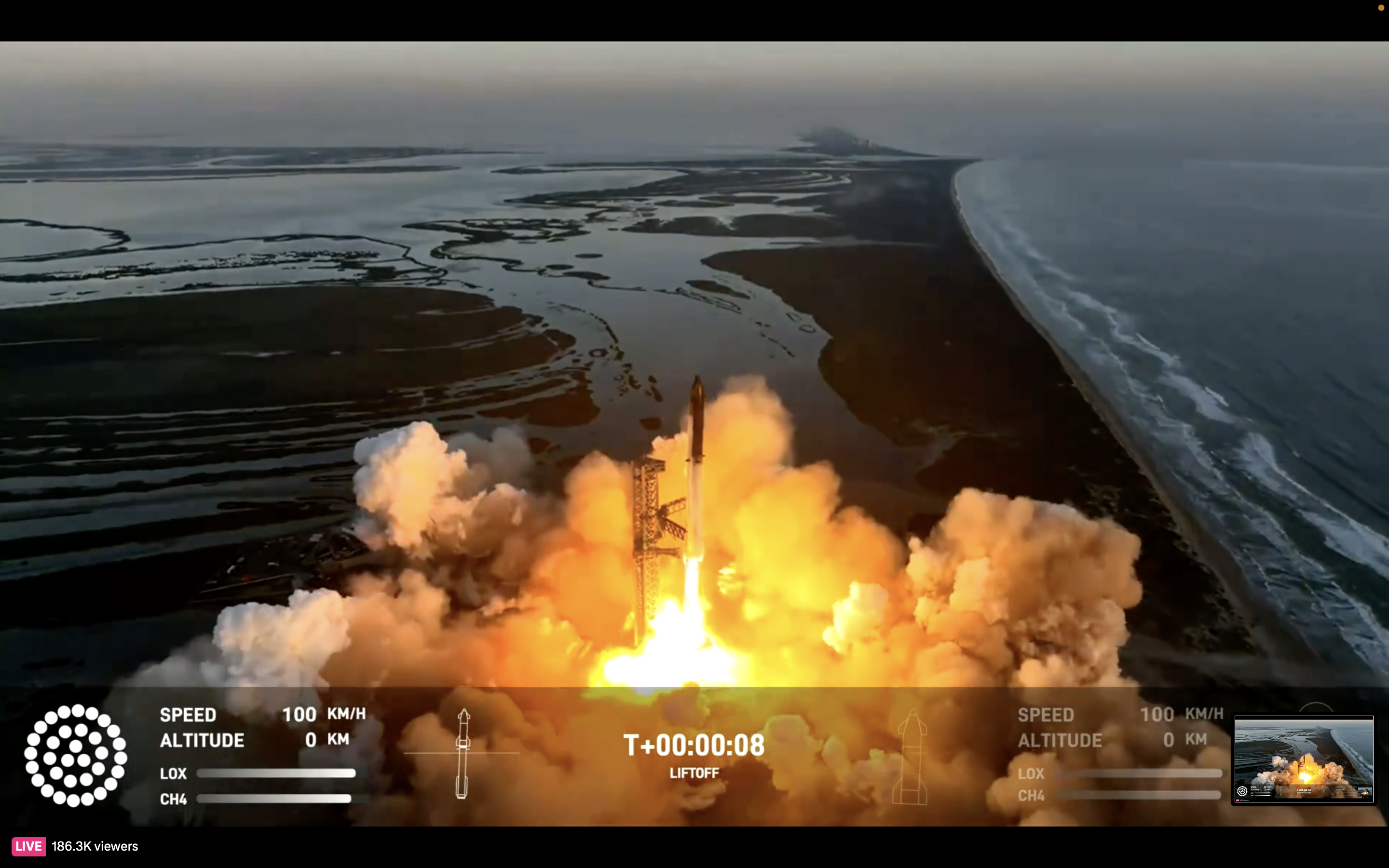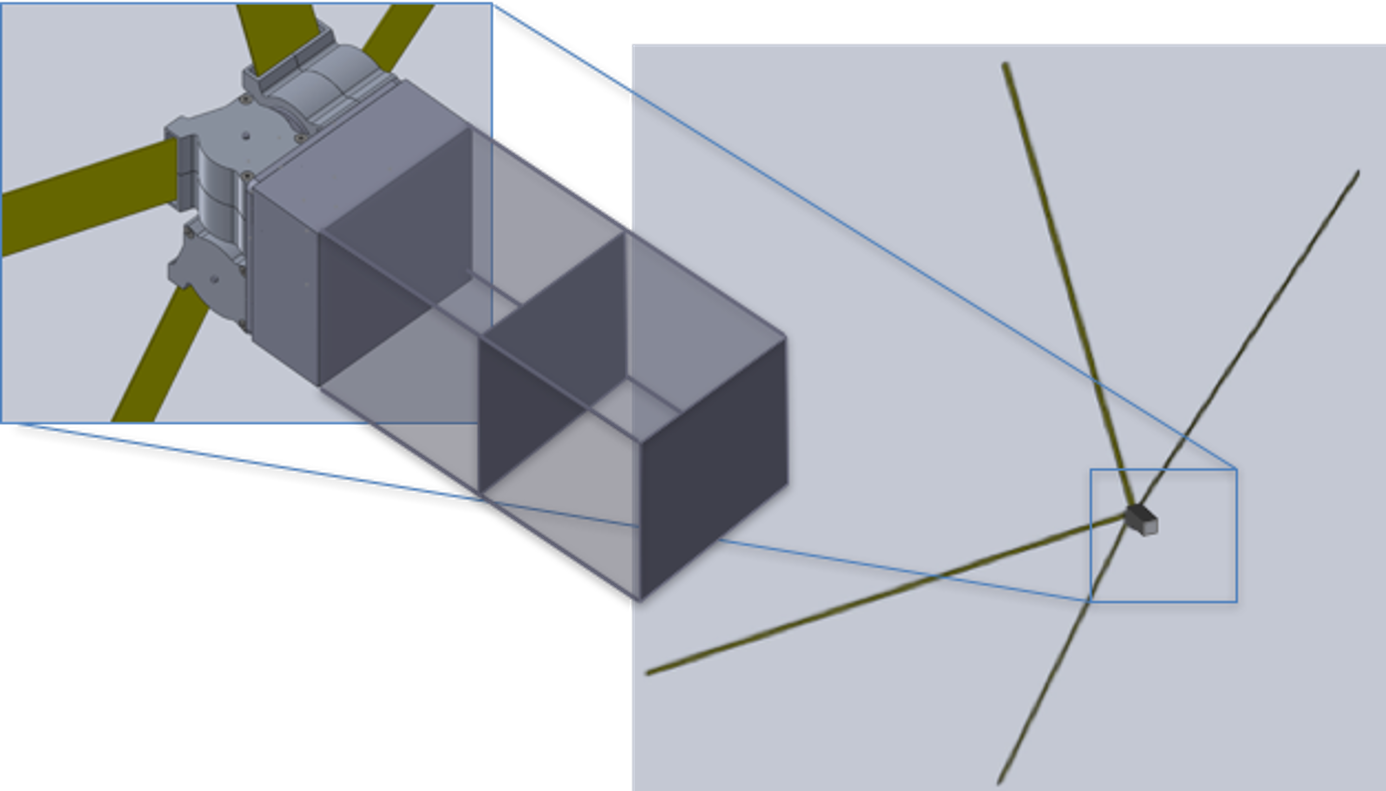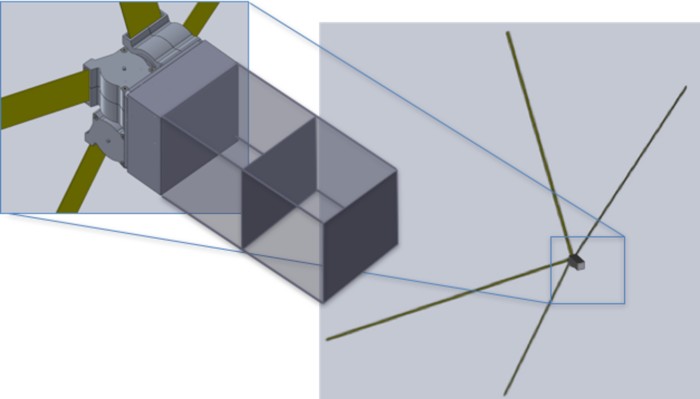In a breathtaking mix of success and setback, SpaceX’s pioneering Starship underwent its second test flight on Saturday. The Godzilla-sized spacecraft (121 m tall) achieved its first space flight in this venture, though the win was temporary. Not long after first-stage separation, the Super Heavy booster and the reusable Starship upper-stage vehicle detonated in quick succession in a “rapid unscheduled disassembly.”
The launch took place from SpaceX’s Starbase test and manufacturing facility in Boca Chica, Texas. This was the 71-meter, 33-Raptor-engine booster and the 50-meter reusable spacecraft’s second launch this year. The first launch took place in April and only lasted about four minutes before it exploded. During a live webcast, SpaceX’s primary integration engineer, John Insprucker, attributed the explosion to the untimely activation of the automated flight termination system on the second stage. He noted this system seemed to kick in late during the burn as the rocket was flying over the Gulf of Mexico.
Even though that the second test flight ended in explosion too, SpaceX considers the test flight successful. This second flight journeyed longer and rose higher than its predecessor, providing critical insights to refine the company’s launch strategies and hardware upgrades for future missions.

SpaceX’s aspirations for Starship go beyond lunar missions. The company aims to eventually establish a sustainable human colony on Mars. Even with the recent mishap which is under review, SpaceX is undaunted in its plans to increase Starship’s launch frequency to potentially hundreds of times per week.
NASA’s Kennedy Space Center in Florida is already preparing to support future Starship missions. SpaceX has high hopes of regularly using these facilities once Starship is deployed routinely.
The Federal Aviation Administration (FAA) announced it would oversee a SpaceX-led investigation into the incident, following standard procedure after launch failures. While the launch was designed to almost completely circle the Earth, its ultimate goal was not to achieve orbit but to return and splash down near Hawaii.
Despite setbacks, SpaceX stakes much on Starship. Apart from NASA’s plans to return astronauts to the moon, Starship is tasked with collecting vital data to support a sustainable off-Earth existence.
Challenges in the development process, such as the complexities of the Raptor engines, new heat shield technologies, and significant mission design changes, still lay ahead. None deter SpaceX from adhering to its “fail fast, and iterate” methodology, gracefully learning from failures and innovating.
While SpaceX anticipates its next Starship flight, a NASA official stated that using Starship for Artemis lunar landings would necessitate “in the high teens” number of launches. This figure is markedly higher than the SpaceX leadership’s previous assertions.
Moreover, the trajectory for reaching the moon with Artemis 3 calls for multiple launches of Starship/Super Heavy vehicles from both the current Texas pad and a future one at Kennedy Space Center. The number of launches necessary has stirred debate ever since NASA assigned the first Human Landing System (HLS) award to Starship in 2021.
As SpaceX grapples with the challenges of Starship’s development, nations worldwide are forging ahead with their individual space programs. Notably, Chinese President Xi Jinping, who recently met Musk, leads a space program that has seen a steady increase in missions, including a first-ever landing on the moon’s far side.
Ultimately, SpaceX views its journey to hardship as part of its progress. Hopes remain high that even as the challenges mount, each failure brings the company a step closer to its wider celestial aspirations.
Featured image: Screenshot from Starship’s second flight test. Credit: SpaceX
Share this article:








